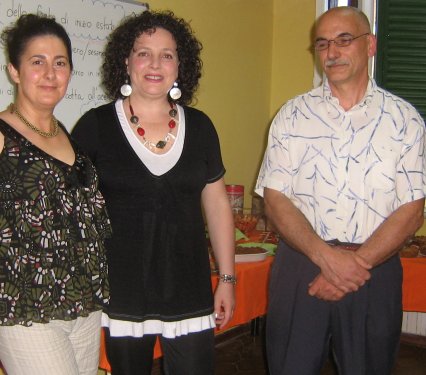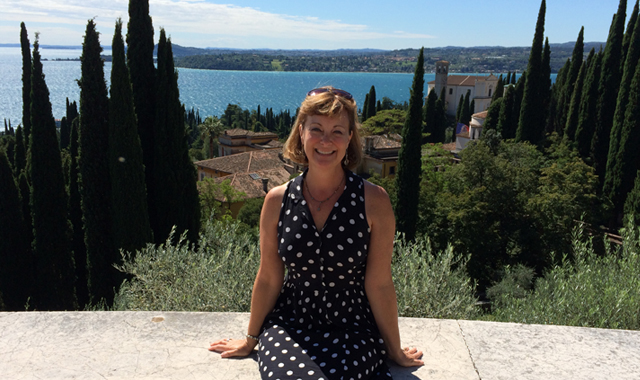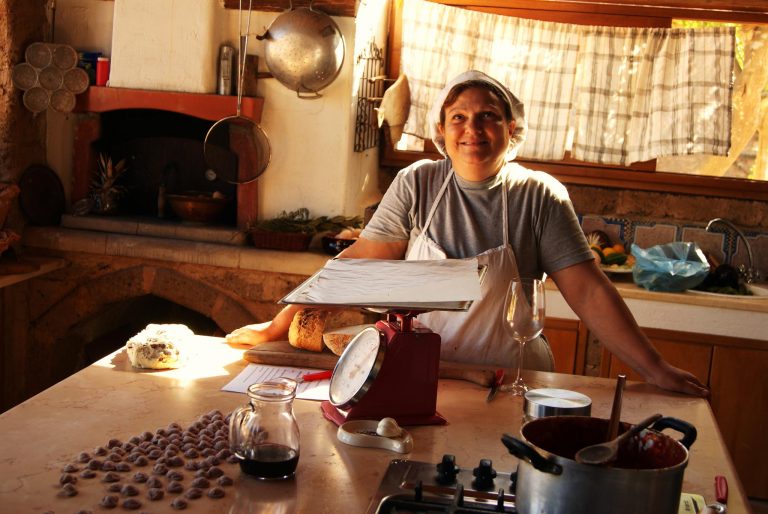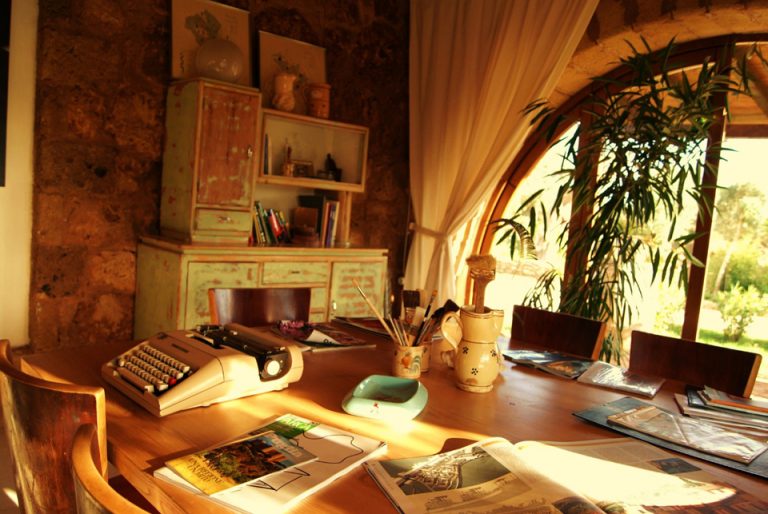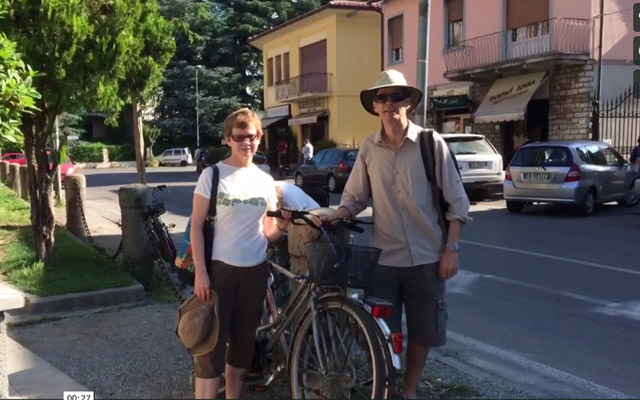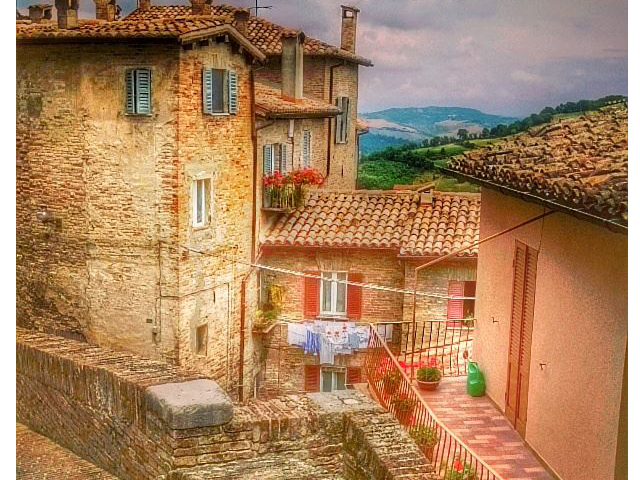
Le Marche sono una bella regione d’Italia che confina con l’Emilia Romagna a Nord, la Toscana a Nord-Ovest e l’Umbria ad Ovest. Con Nadia, una nativa appassionata del suo paese, faremo delle gite nella la zona per scoprire di più della sua amata regione. Visiteremo città, paesini, colline, pianure…e persino castelli! In questo guest post Nadia racconta di un castello molto particolare che visiteremo nel borgo medievale di Frontone.
Le Marche is a beautiful region of Italy that is bordered by Emilia Romana to the north, Tuscany to the north-west, and Umbria to the West. With Nadia, a native who is passionate about her paese, we will venture out into the surrounding area and discover more about her beloved region. We will visit towns, villages, hills, plains…and even castles! In this guest post, Nadia tells about a very special castle that we will visit in the medieval village of Frontone.
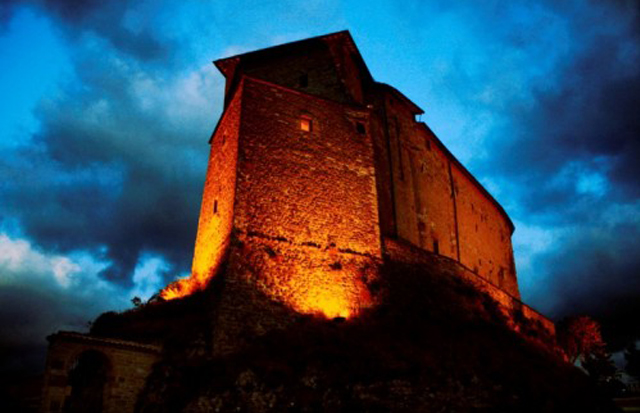
Frontone è un incanto della natura: arroccato sulla cima di un ripido colle, domina dall’alto la sua vallata con imponenza e maestà; la storia di Frontone è legata soprattutto al suo Castello, conteso da principi e da guerrieri per il dominio delle contrade circostanti e che oggi rappresenta uno dei più chiari esempi di architettura militare dell’XI secolo. Le prime notizie sul famoso Castello di Frontone risalgono infatti all’XI secolo e la sua storia è legata a quella delle Signorie di Gubbio, Cagli ed Urbino, che fa pensare ad una storia ricca di nobiltà e di fascino. Il Castello di Frontone è oggi di proprietà del comune ed è visitabile.
Frontone is an enchantment of nature: perched on a top of a steep hill it dominates from on high the valley below with its grandeur and bravura; the history of Frontone is tied above all else to the castle, contested by princes and warriors in order to dominate the surrounding principalities and still today represents one of the finest examples of military architecture of the eleventh century. The first news about the Frontone Castle dates back to the eleventh century and its history is linked to the Lords of Gubbio, Cagli, and Urbino and a history that is rich in nobility and charm. The castle of Frontone is owned today by the town and is open to visitors.
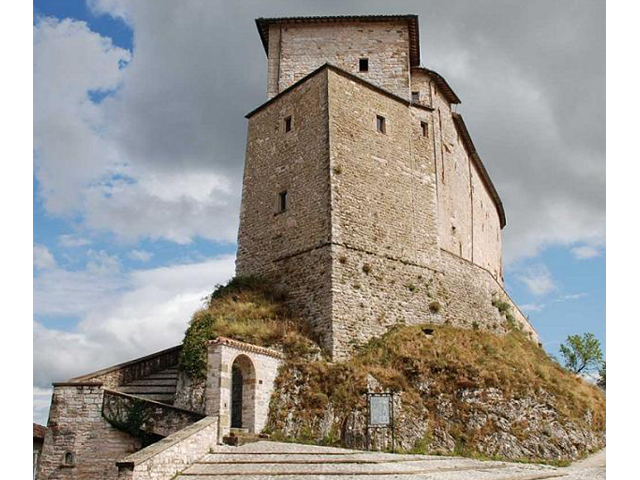
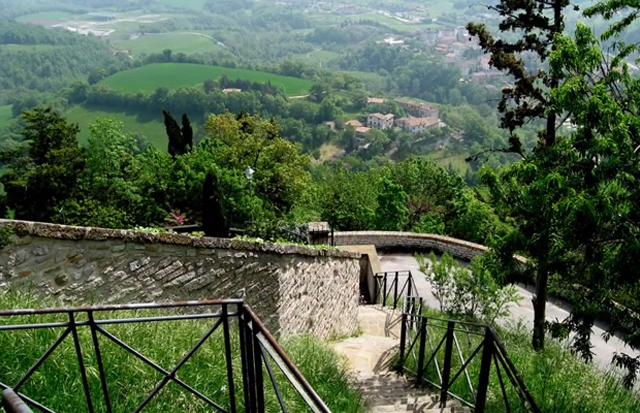
Il contesto naturalistico in cui è inserito questo stupendo castello, è assolutamente uno dei più suggestivi delle Marche in quanto ci troviamo proprio a ridosso dell’imponente Monte Catria; parliamo di una natura rigogliosa e incontaminata a 600 metri sul livello del mare, ben conservata dalla sapiente opera degli uomini che hanno abitato e abitano questi luoghi, e che rappresenta una delle principali caratteristiche che fanno di Frontone il luogo ideale per una vacanza a stretto contatto con la natura. E’ possibile raggiungere, attraverso i numerosi sentieri e le mulattiere che lo percorrono, le vette del Catria (1700 mt) e dell’Acuto (926 mt) riscoprendo i tesori nascosti del sottobosco come funghi, fragole, more, tartufi, le infinite sorprese di una natura che si risveglia, le veloci fughe dei daini e dei caprioli e, se particolarmente fortunati, il maestoso e regale volteggiare delle aquile.
The natural environment in which this beautiful castle is located, is absolutely one of the most striking in the Marches, as it is located very near to the imposing Mount Catria: we are speaking of a surrounding area that is pristine and lush, situated 600 meters above sea leave, but still well preserved by the skillful work of men who have lived and continue to live here making Frontone an ideal place for a holiday communing with nature. It is possible to explore the entire area on foot using the trails and mule tracks that run through the terrain to the peaks of Catria (1700m) to Acate (926m). Here in this wild area surrounding the Frontone castle you will discover hidden natural gems, like mushrooms, strawberries, blackberries, and truffles, as well as other infinite surprises, like the start of a deer or roe deer… and if you are especially lucky the majestic and regal flight of a circling eagle.
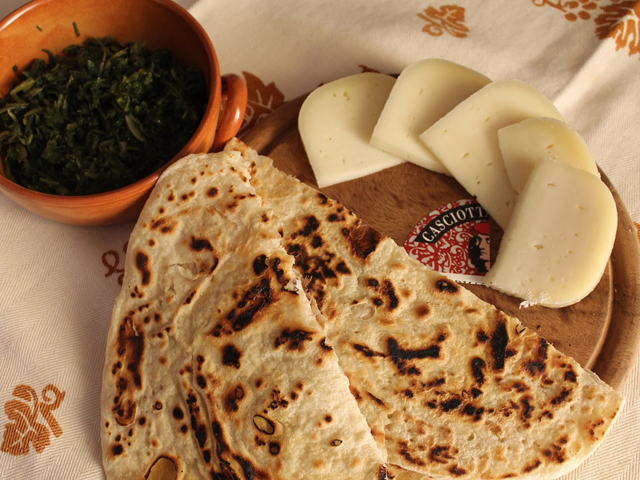
Dal punto di vista gastronomico, Frontone eccelle per la sua famosa “crescia” da non confondere con la “piadina” in quanto sapienti maestri della tradizione hanno saputo mantenere inalterato il sapore ed il gusto di questa ricetta, facendone appetitoso richiamo per molti turisti. Spesso si ha il piacere di recarsi a Frontone proprio per gustare questa specialità che viene servita ripiena con “erbe di campo” o “salsiccia” o “formaggio” e altro ancora.
From a culinary point of view, Frontone is famous for its “crescia” – not to be confused with the “piadina” (flatbread). Over the years local cooking masters and chefs have maintained the recipe, so as to retain the original flavor and taste of the recipe. It is a point of pride amongst the people living here and is a thing that visitors must try during their stay in Frontone. Often times it is worth a visit to Frontone just to sample this local specialty that is served stuffed with field greens, sausage or cheese and other delicious fillings.
Grazie Nadia di averci raccontato più del castello di Frontone! Non vedo l’ora di essere nelle Marche con te! Se volete sapere di più del nostro programma visitate questa pagina per più dettagli!
Thanks Nadia for telling us more about the castle of Frontone! I can’t wait to be there nelle Marche with you! I you all would like more information about our program next June, visit this page for more details!

Nadia Sparapani di Loving Marche ed io stiamo collaborando per organizzare il prossimo giugno, otto giorni d’immersione nella lingua e della cultura delle Marche (28 giugno – 6 luglio 2015). Il nostro gruppo alloggerà a Palazzo Donati, una villa privata che fu costruita nel 1700, che può ospitare fino a dieci persone. Io e Nadia abbiamo creato un programma divertente che unirà lezioni di mattina con le escursioni al pomeriggio. Cristina Battelli, un’insegnante associata con l’Università di Urbino si occuperà dell’insegnamento e della pratica di conversazione, e Nadia e i suoi soci saranno le nostre guide durante i pomeriggi, aiutandoci a conoscere meglio le Marche. Durante il soggiorno nelle Marche, le escursioni e le attività comprenderanno non solo la visita di Urbino, città natale di Raffaello, ma prenderemo parte anche ad un corso di pittura della ceramica, così come corsi a cucina, imparando a preparare pasti completi con i piatti locali. Nelle escursioni avremo anche l’opportunità di fare delle degustazione di vini e formaggi locali. Ho anche organizzato una serata speciale alla villa Donati con gli amici di Urbino, che fanno parte di un gruppo di cantanti di madrigali, e che si uniranno a noi per farci conoscere la musica e i giochi dell’epoca.
Next June, Nadia Sparapani of Loving Marche and I are teaming up to create eight days of language and cultural immersion in Le Marche (June 28th-July 6th 2015). Our group will be staying in Palazzo Donati, a private villa that was built in the 1700s and that can accommodate up to ten people. Nadia and I have designed a fun program that will combine morning language instruction with afternoon excursions. Cristina Batelli, a teacher associated with the University of Urbino, will oversee language instruction and conversation practice, and Nadia and her partners will provide expert guidance during our afternoons helping us to learn more about le Marche. During our time in le Marche, our excursions and activities will not only include a visit to Urbino, the birthplace of Raphael, but we will also take part in a ceramics painting class, as well as cooking classes, learning to prepare full course meals based on local dishes and recipes. On our outings, we will also have the chance to sample local wines and cheeses. One evening at the Villa, as a special treat, I have arranged for friends from Urbino who belong to a Madrigal group, to join us for music and games!
